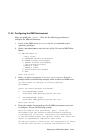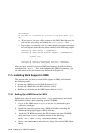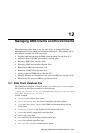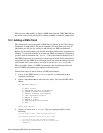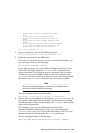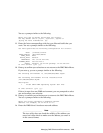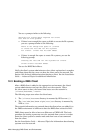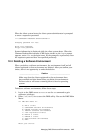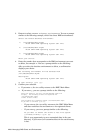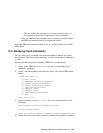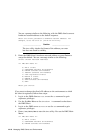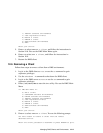
You see a prompt similar to the following:
Enter the type of kernel build area for client1.
You may select one of [F]ull, [P]artial, [N]one or
[H]elp for more information. [P]:
11. Enter the letter corresponding with the type of kernel build that you
want. You see a prompt similar to the following:
You have specified the following configuration for client1:
ROOT: /clients/client1
SWAP_DEVICE: /dev/disk/dsk0b
SWAP_TYPE: RZ26
BUILD_TYPE: Partial
INTERFACE: ln0 (nn.nn.nnn.nnn)
SUBNET_MASK: 255.255.255.0
ROUTE: network: nn.nn.nnn gateway: nn.nn.nnn.nnn
Is this correct (y/n) [y]:
12. Enter y to confirm your selections or n to return to the DMU Main Menu.
If you enter y, you see a prompt similar to the following:
The existing environment is /var/adm/dms/dms0.alpha.
The following environment will be installed from
/var/adm/dms/dms0.alpha:
Description
1 ’Tru64 UNIX VAAA Operating System (Rev nnn)’
Is that correct? (y/n) [y]:
If there is more than one DMS environment, you are prompted to select
one and confirm your selection.
13. Enter y to confirm your selection or n to return to the DMU Main Menu.
You see a prompt similar to the following:
Enter the client processor’s hardware network
address. For example, 08-00-2b-02-67-e1:
14. Enter the DMS client’s hardware network address.
____________________ Note _____________________
The dms utility does not check the validity of the address you
enter, but it does check to make sure the address you enter is
in the correct format.
Managing DMS Clients and Environments 12–5



